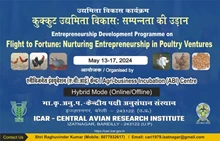
Sugarcane is a species of tall, perennial grass that is used for sugar production. India is one of the largest producers of sugarcane along with Brazil, Thailand, China, Pakistan, Mexico, Colombia, and the Philippines.
Sugarcane cultivation is a tropical and subtropical, perennial grass that is popularly grown around the world. Other than being used to produce sugar, molasses, and cattle feed, sugarcane juice is also a popular beverage in many South Asian countries for its purported health benefits like curing acne, boosting energy, and preventing tooth decay. Let us take a look at the conditions under which this important crop is grown
Soil and Sowing
Sugarcane can thrive in a wide range of soils as long as there is enough moisture content. Deep rich loamy soils are best for quality growth and high yield. Soils with good water drainage and pH between five and eight are ideal for sugarcane cultivation. Good fertile soil is the most desirable for cultivating sugarcane. Before sowing sugarcane, the field should be ploughed using different tractor-drawn implements to obtain soil tilth and prepare the ridges and furrows.
Sunlight and Temperature
In India, sugarcane is planted thrice a year- in October, February-March, and July. For even and uniform germination, the sugarcane crop requires a temperature between 25 and 32 degrees Celsius. This crop responds well to long periods of sunlight, high humidity, and rainfall between 1800 and 2500 mm. The sugarcane crop can withstand temperature variations between 6 degrees Celsius and 42 degrees Celsius.
Irrigation
The water requirements of the sugarcane crop depend upon the soil type and climatological factors in which the sugar cane is being cultivated. During germination, the sugarcane crop should be adequately watered so that there is enough moisture in the soil that supports germination. However, make sure to not overwater as standing water can lead to the rotting of roots and stems.
After germination, watering should be scheduled at weekly intervals, and during the tillering stage, watering should be irrigated at 10-day intervals. When the sugarcane crop approaches a mature stage, the crop should be irrigated once every fortnight, and then irrigation should cease completely at least 2 weeks prior to harvest.
Fertilizer
For sustained high yields, applying an adequate layer of manure is essential. Farmyard manure, compost, green manure, or tree leaves should be applied as they are the best form of nitrogen. It is also advised to apply a good layer of nitrogen, phosphorous, and potassium fertilizer to prepare the field for sowing.
Weed Control
The sugarcane crop is susceptible to weed infestations, especially at the initial stage. It is important to control weed growth as it can compete with the sugarcane crop for nutrients, water, and sunlight. To manage weeds, spray herbicide across the field before planting. Weedicides can also be sprayed across the field if they emerge after sowing the crop and they can be removed manually. While removing weeds make sure to remove them from the roots.
Crop Rotation
There are lots of benefits of performing crop rotation on sugarcane fields as it raises agricultural productivity. It also improves soil health significantly. Usually, crops such as cotton, maize, and wheat can be grown after sugar cane. Sugarcane crops can also be intercropped with potatoes, onions, and coriander.
Common Pest and Diseases
Some popular sugarcane plant diseases include smut, wilt, and red rot disease. These diseases can be controlled by sowing resistant varieties and uprooting the infected plants and burning them. The sugarcane crop is also susceptible to several pest infestations. For instance, white grub, early shoot borer, and wholly aphid. A pest infestation can be managed by removing infested stems and leaves, providing adequate irrigation, and applying the corresponding insecticide.
Harvest
The sugarcane crop should be harvested at the right maturity level. It is important to stop irrigating the crop for at least 2 to 3 weeks before harvesting the crop. After harvesting, all of the dry leaves should be removed from the canes and roots. The harvested sugarcane should be made into bundles and then sent to the processing plant.











